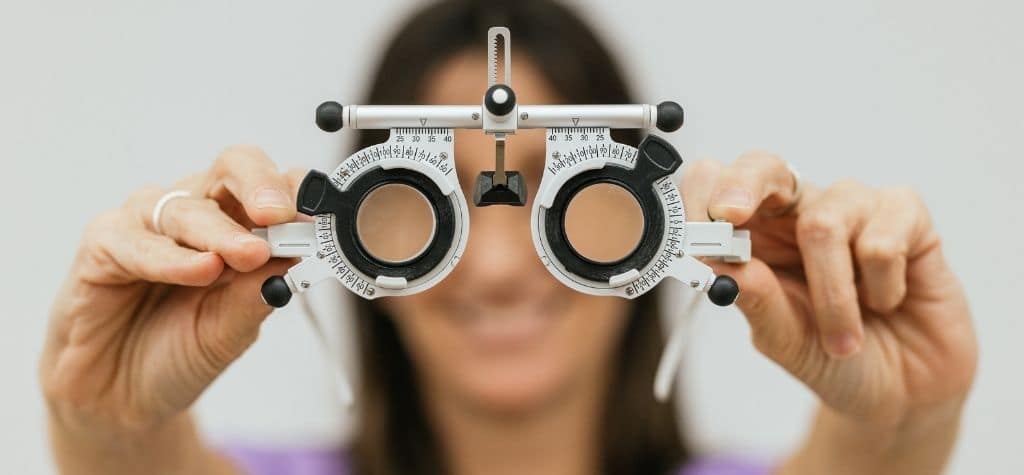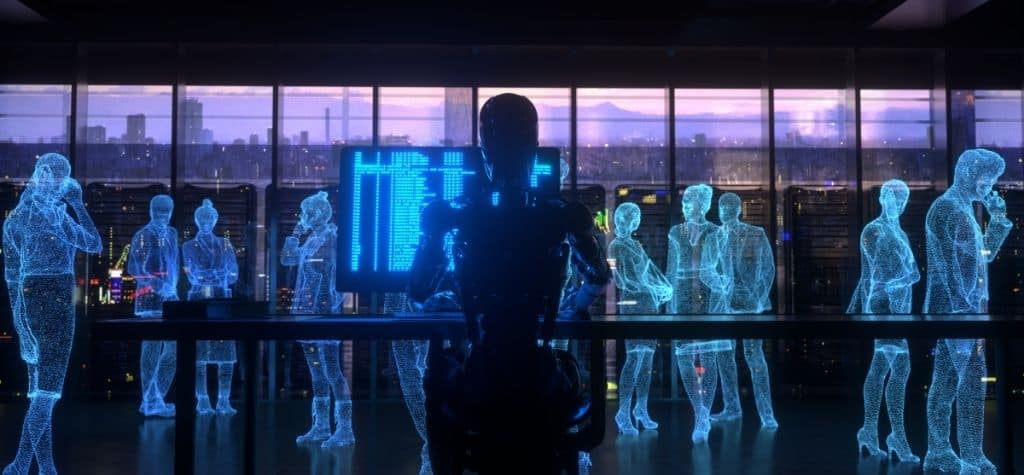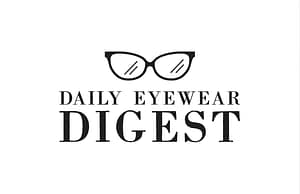Vision is one of our most precious senses. When sight is impaired, it affects how we learn, work and enjoy life. Eye doctors have used vision therapy—sometimes described as physical therapy for the eyes—to train the brain and eyes to work together. Conventional programs involve in‑office sessions and at‑home exercises with patches, lenses and prisms, typically lasting months. These programs help specific problems, but research shows they are mainly effective for convergence insufficiency and a related focusing problem. Most other forms of vision therapy remain controversial and lack strong scientific evidence.
In recent years, artificial intelligence (AI) has entered the world of eye care. Sophisticated algorithms and machine learning models can analyse huge datasets, detect subtle changes in retinal images and even personalise treatment plans. AI promises to improve screening and diagnosis, make therapy more engaging and accessible, and bridge the gap for regions with few eye specialists. The combination of AI and vision therapy is beginning to change how we treat common childhood disorders like amblyopia (lazy eye) and strabismus (eye misalignment). This article explores how AI is transforming vision therapy, what evidence exists, and what to expect in the coming years.
Understanding Vision Therapy

Vision therapy trains and exercises the eyes to improve how well they see. Treatments generally involve monitored in‑office and at‑home eye exercises performed over weeks or months. Depending on the diagnosis, practitioners may use training glasses, light‑bending prisms, patches or electronic devices. The American Association for Pediatric Ophthalmology and Strabismus describes vision therapy (also called orthoptics) as a profession that evaluates and treats disorders of the visual system, particularly binocular vision and eye movement. An optometric vision therapy program typically consists of supervised office exercises and at‑home reinforcement, and may include lenses, prisms, filters or electronic targets.
Common Conditions Treated With Vision Therapy
Modern vision therapy targets a narrow set of clinically proven conditions. These include:
- Amblyopia (lazy eye). A decreased vision in one or both eyes due to abnormal development during early childhood Occlusion therapy (patching) or pharmacologic penalisation (atropine drops) are the gold standards for treating amblyopia. These approaches penalise the better eye to force the brain to use the weaker eye, thereby stimulating visual development.
- Convergence insufficiency. An inability to maintain binocular function at near distances. One eye may drift outward when focusing on near objects. Orthoptic vision therapy for convergence insufficiency uses guided eye movement exercises and is considered medically necessary.
- Esotropia and exotropia. Esotropia is an inward turn of one or both eyes, whereas exotropia is an outward turn. Prism adaptation therapy, which uses prisms to align the eyes temporarily, can help determine surgical targets for esotropia.
- Accommodative dysfunction. Accommodative dysfunction is the difficulty focusing when shifting gaze from near to far. Often treated alongside convergence insufficiency.
Notably, mainstream organisations—including the American Academy of Pediatrics, the American Academy of Ophthalmology, the American Association for Pediatric Ophthalmology and Strabismus and the American Association of Certified Orthoptists—recommend against behavioural vision therapy for learning disabilities or conditions other than convergence insufficiency. Insurance policies reflect this evidence; UnitedHealthcare’s 2025 medical policy lists remote digital therapy for amblyopia as unproven and not medically necessary.
How Traditional Vision Therapy Works
During a typical program, an eye specialist evaluates how your eyes align and work together and then prescribes specific exercises. These exercises may involve:
- Patching or occlusion therapy. Covering the stronger eye with a patch to stimulate the weaker eye.
- Pharmacologic penalisation. Using atropine drops to blur the stronger eye and encourage use of the amblyopic eye.
- Orthoptic exercises. In‑office sessions led by an orthoptist with take‑home activities to strengthen eye movement and focusing abilities.
- Prism adaptation. Wearing prisms temporarily to align eye axes and determine surgical targets for strabismus.
- Training aids. Tools such as training glasses, filters, computer games and balance boards to improve visual processing.
These methods can be effective for specific problems, but they require frequent office visits, supervised sessions and strong motivation. Many children find patching uncomfortable, and adherence to hours of daily treatment is low. Additionally, research evidence shows that patching and atropine remain the most effective treatments for amblyopia, while the role of vision therapy for other conditions remains limited.
Limitations of Traditional Vision Therapy

While conventional vision therapy helps some patients, it faces several challenges:
Controversial evidence. Most vision therapy is considered controversial among eye care specialists. Research does not support its use for conditions other than convergence insufficiency and accommodative dysfunction. Trying unproven therapies can delay effective treatment and may lead to permanent vision issues.
Limited reimbursement. Because evidence is weak for many indications, medical and vision insurance plans rarely cover vision therapy. Families often pay out of pocket.
Adherence challenges. Patching a child’s healthy eye for hours each day is uncomfortable and socially awkward, leading to poor adherence. Treatment success depends heavily on family commitment and consistent practice.
Access barriers. Orthoptic therapy requires specialised professionals who may not be available in rural or low‑income areas. In regions with low optometrist‑to‑patient ratios, patients often travel long distances for care.
One‑size‑fits‑all programmes. Traditional therapy programmes often follow fixed protocols that may not adapt to individual differences in visual system plasticity.
These limitations have spurred researchers and companies to explore digital and AI‑powered alternatives that can personalise training, monitor adherence and make therapy more engaging.
The Emergence of Artificial Intelligence in Eye Care

AI refers to algorithms that allow computers to perform tasks that typically require human intelligence, such as pattern recognition and decision‑making. In eye care, AI models analyse retinal images, optical coherence tomography scans and clinical data to screen for diseases, predict progression and assist in diagnosis. A 2025 review noted that AI can significantly reduce the time required for disease screening, detection, diagnosis and management, thereby improving efficiency and accuracy. AI tools also enhance organisational and shared decision‑making by providing accurate, timely and personalised information.
AI systems in ophthalmology already perform autonomously in several areas:
- Diabetic retinopathy screening. Deep‑learning models trained on millions of fundus images can detect diabetic eye disease with high sensitivity. AI‑enabled cameras are being deployed in primary care clinics to screen patients and refer only those needing specialist care.
- Glaucoma and myopia detection. AI algorithms analyse optical coherence tomography (OCT) scans and help detect early optic nerve damage and myopia progression. A recent public health review reported that AI improves screening and monitoring, risk prediction and medical resource allocation.
- Telemedicine. AI‑assisted telehealth platforms allow remote eye exams and triage, expanding access to care in underserved regions.
- Prediction and personalised medicine. Machine‑learning models can forecast disease progression, estimate treatment response and identify optimal intervention windows. Such predictive analytics support more personalised care.
By augmenting the abilities of clinicians, AI promises to fill workforce gaps and improve eye‑care outcomes, particularly in countries with limited resources.
AI‑Powered Vision Therapy

The Concept of Digital and Dichoptic Treatment
New digital therapeutics apply AI and computer graphics to deliver binocular (dichoptic) treatment for amblyopia. Dichoptic therapy presents different images to each eye to encourage the brain to use the weaker eye. Traditional patching prevents use of the dominant eye, whereas dichoptic systems reduce contrast and selectively blur the stronger eye while showing complementary images to both eyes. This encourages the brain to combine inputs and develop binocular vision.
Two prominent systems have emerged:
- Luminopia. Luminopia Inc.’s virtual‑reality headset is the first FDA‑approved VR binocular therapy for children 4‑7 years old. It offers more than 3,000 episodes of popular children’s shows, with reduced contrast in the non‑amblyopic eye and blocked complementary areas. The child watches one hour per day, six days a week, with treatment typically prescribed for several months.
- CureSight. Developed by NovaSight, CureSight uses red‑blue glasses and a tablet‑like display to present streaming content. It allows children to watch their favourite shows while training their eyes. The device is FDA‑cleared (substantially equivalent to a predicate device) and is available for children 4–9 years old. CureSight uses central blur to the stronger eye rather than contrast reduction.
These systems illustrate how AI and digital tools can make therapy more engaging. The headsets track compliance and performance, providing objective data to clinicians. Real‑time eye‑tracking algorithms adjust images based on gaze and ensure each eye receives the intended stimulus. Over time, the AI learns a child’s response patterns and may adapt difficulty levels.
Evidence From Clinical Trials
Researchers have tested these digital therapies in randomised controlled trials. In Luminopia’s pivotal trial, 4‑ to 7‑year‑old children with anisometropia or mild strabismus received VR therapy combined with glasses or glasses alone. The treatment group experienced a 1.8 logMAR improvement in visual acuity compared with 0.8 logMAR improvement in the glasses‑only group. Although promising, the authors emphasised that more studies are needed to compare Luminopia to the gold standard of patching.
In the CureSight trial, children aged 4 to under 9 with anisometropia or small‑angle strabismus were randomised to digital therapy or patching. Participants used CureSight for 1.5 hours per day, five days a week for 16 weeks. Visual acuity improved slightly over two lines with patching and almost three lines with CureSight. Stereo acuity improved equally in both groups. The data suggest that digital therapy may be as effective or better than patching for some patients, although long‑term comparative data are still limited.
How AI Makes Digital Therapy Work
AI plays a key role in these digital interventions:
- Eye‑tracking algorithms. Real‑time gaze tracking ensures the proper stimulus is delivered to the correct eye. In CureSight, embedded sensors track where the child is looking and adjust blur accordingly. This personalisation is more precise than manual patching.
- Content adaptation. AI systems can analyse performance data and adjust tasks or difficulty levels. If a child quickly completes certain tasks, the system may introduce more complex stimuli. Conversely, if the child struggles, it can reduce difficulty. Such adaptation keeps therapy challenging yet achievable, which may improve neural plasticity.
- Compliance monitoring. Digital therapeutics log usage time, giving clinicians objective adherence data. If usage drops, clinicians and parents can intervene sooner. Many families appreciate this insight because patching compliance is notoriously difficult to monitor.
- Data‑driven feedback. AI algorithms can generate progress reports showing improvements in visual acuity, stereo acuity and reaction time. These reports can motivate children and parents and help eye‑care providers tailor the program.
Personalized Vision Therapy Through Machine Learning
Beyond VR headsets, AI can personalise traditional therapy. Machine‑learning models trained on large datasets of patient characteristics and responses can predict which therapy regimen will work best for a specific child. For example:
- Predictive analytics. By analysing baseline visual acuity, age, eye alignment and compliance patterns, AI could recommend whether a patient will benefit more from patching, atropine, dichoptic therapy or a combination.
- Adaptive scheduling. Algorithms may determine optimal session durations and frequency, reducing the risk of treatment fatigue.
- Risk stratification. AI can estimate the likelihood of non‑adherence or the risk of recurrence after treatment and prompt proactive support.
Such personalisation could reduce unnecessary treatment, improve outcomes and support resource‑limited clinics.
Beyond Therapy: AI in Screening and Management

AI’s influence extends far beyond vision therapy. Ophthalmologists are incorporating AI to improve population eye health:
- Automated screening for common eye diseases. AI algorithms can detect diabetic retinopathy, glaucoma and age‑related macular degeneration from retinal photographs and OCT scans. This allows early detection, especially in primary care settings where eye specialists are scarce.
- Teleophthalmology. AI‑assisted telemedicine platforms enable remote eye exams using smartphones or portable fundus cameras. AI interprets the images and flags abnormalities, while specialists review urgent cases.
- Resource allocation. AI helps optimise healthcare resources by identifying high‑risk individuals and directing them toward specialist care. A public health review found that AI improves data management, risk prediction and health education.
- Research and discovery. Machine learning analyses vast datasets to identify new biomarkers and predict disease progression. This accelerates research and opens new avenues for personalised medicine.
The integration of AI into routine care can help address the worldwide shortage of eye specialists and reduce disparities in access to care. However, these benefits come with ethical and practical challenges.
Benefits of AI‑Driven Vision Therapy
The merging of AI and vision therapy offers several advantages:
- Improved adherence and engagement. Children often resist wearing patches, but they generally enjoy watching cartoons. VR and tablet‑based therapies incorporate entertainment, which keeps children engaged. Built‑in compliance monitoring provides objective data to parents and clinicians.
- Accessibility and convenience. Digital devices allow therapy at home, reducing the need for frequent office visits. This is especially helpful for families living far from specialised clinics or those with limited transportation options.
- Personalisation. AI systems can adjust therapy parameters in real time, matching difficulty to individual performance and ensuring that each eye receives the appropriate stimulus. Machine‑learning models can also predict treatment outcomes and tailor interventions accordingly.
- Reduced costs and time. AI‑assisted screening and therapy may decrease healthcare costs by focusing specialist resources on patients who need them most. Data from public health studies show that AI improves efficiency in disease screening and management.
- Data‑driven decision‑making. Clinicians receive detailed reports of usage, performance and progress. These insights enable more informed discussions with families and can guide modifications to therapy plans.
Challenges and Ethical Considerations
While promising, AI‑powered vision therapy presents several challenges:
- Limited evidence. Current trials for digital amblyopia therapy involve relatively small cohorts. While initial results show improvements, long‑term efficacy and comparative effectiveness against patching require further study. Insurers still classify remote digital therapy as unproven.
- Regulatory and privacy issues. Many AI models remain confined to research settings because of regulatory barriers, lack of clinical validation and concerns about data security. Integrating AI into electronic health records requires standardised metadata and robust privacy protections.
- Equity and bias. Machine‑learning models trained on data from specific populations may not perform equally well across diverse ethnic or socioeconomic groups. Biases can arise from unequal access to digital devices or from differences in internet connectivity.
- Cost and accessibility. VR headsets and digital platforms can be expensive. Families in low‑income regions may not have access to high‑speed internet or may find the devices unaffordable. Without subsidies or insurance coverage, these tools may widen disparities.
- Clinical acceptance and training. Many clinicians are unfamiliar with AI models and their functionality. Providers need training to interpret AI outputs and integrate them into patient care.
Practical Tips for Parents and Patients
If you are considering AI‑assisted vision therapy for your child, here are some practical steps:
- Consult a paediatric ophthalmologist or optometrist. An eye specialist will diagnose the condition and advise whether digital therapy is appropriate. They can also explain how AI‑powered systems complement or replace traditional treatments.
- Ask about evidence and alternatives. Discuss the latest research findings and compare digital therapy with patching or atropine. For moderate amblyopia, patching or atropine remain the gold standard.
- Evaluate costs and insurance coverage. Digital devices may not be covered by insurance. Check whether the provider offers payment plans or whether charitable foundations assist with costs.
- Ensure supervised use. Follow the prescribed schedule carefully. Even though therapy occurs at home, children benefit from parental supervision to ensure they use the device correctly and for the recommended time.
- Monitor progress. Take advantage of progress reports generated by digital systems. Share these with your eye specialist to determine whether adjustments are needed.
Future Directions in AI Vision Therapy

The next decade will likely see rapid innovation in AI‑powered vision therapy. Researchers are exploring:
- Augmented reality (AR) and mixed‑reality therapies. AR devices overlay digital objects on the real world. For vision therapy, AR could present stimuli within everyday environments, training the eyes during normal activities. Machine‑learning models would adapt stimuli based on gaze and environmental factors.
- Wearable and mobile technologies. Smartphone‑based vision therapy apps could deliver dichoptic stimuli without dedicated headsets. Combined with AI, these apps could enable low‑cost therapy in low‑resource settings.
- Integration with biometrics. Physiological sensors that measure pupil responses, eye movements and neural signals could feed into AI models, allowing therapies that respond to real‑time neural feedback.
- Big‑data collaboration. Multi‑institutional databases pooling anonymised treatment data may enable more robust machine‑learning models. These models could identify which patients respond best to specific therapies and refine clinical guidelines.
- Ethics‑by‑design frameworks. Researchers and policymakers are developing standards to ensure transparency, fairness and privacy in AI vision therapy. Standards will likely require external validation, open datasets and clear communication with patients.
Conclusion and Takeaway
Artificial intelligence offers a powerful set of tools to transform vision therapy. Traditional vision therapy, though helpful for specific issues, is limited by weak evidence for many conditions, adherence challenges and access barriers. AI‑powered digital therapies like Luminopia and CureSight employ eye‑tracking, content adaptation and compliance monitoring to make treatment more engaging and personalised. Early clinical trials indicate that these systems may improve visual acuity as effectively as or better than patching, although further research is needed to confirm long‑term benefits. Beyond therapy, AI improves screening and management of eye diseases, offering hope for global eye health.
As AI vision therapy evolves, it promises to reduce disparities in access to eye care and to deliver personalised, data‑driven treatment plans. Patients and parents should consult eye specialists, weigh evidence carefully and stay informed about emerging therapies. With thoughtful implementation, AI can complement proven treatments, support clinicians and help millions of people see the world more clearly.

